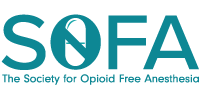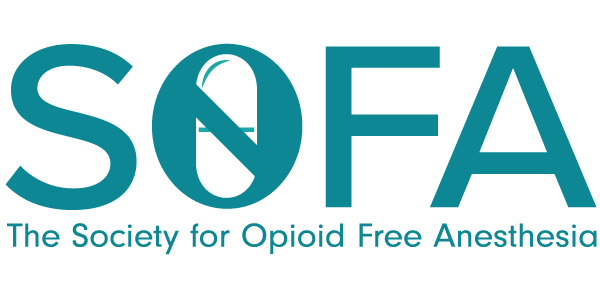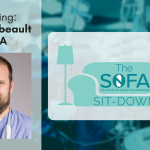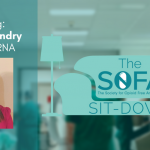SOFA Sit-Down Featuring Dr. David Samuels, MD
Welcome to the newest installment of the “SOFA Sit-Down!” The Series that allows you to be the interviewer. We will have medical professionals, patients, and passionate people ready to answer all your questions. From the serious to the quirky, they’ll do their best to give the answers you need! This edition, we have Dr. David Samuels, MD, joining us!
Dr. Samuels (@djsammy8 on twitter) is an anesthesiologist, facility medical director at TEAMHealth Anesthesia, and medical director of anesthesia at Select Physicians Surgery Center in Tampa, Florida. He is also the founder of NOPE! Non-opioid Patient Engagement. Dr. Samuels’ study, “Opioid-free Anesthesia Results in Reduced Post-operative Opioid Consumption” has recently been published in the Journal of Clinical Anesthesia and Pain Management!
Enjoy!
Congratulations on the publication of your study “Opioid-free Anesthesia Results in Reduced Post-operative Opioid Consumption” in the Journal of Clinical Anesthesia and Pain Medicine this past year. The study is a retrospective analysis that included a comparison of your own cases when using opioid sparing anesthesia (OSA) and opioid free anesthesia (OFA) to standard opioid anesthesia (OA). Can you explain the process of the evolution of your practice?
Thank you for the opportunity to speak with you. I have been in practice for 27 years. The first 25 were at Tampa General Hospital where I had a boutique surgeon-request practice. In 2002, I had a healthy patient who was found “dead in bed” at 6am the morning after orthopedic knee surgery. He was on an IV PCA and was snoring so loudly the previous night that the nurses closed the door so as not to disturb the other patients. This story was very similar to the eight cases reported later that year to the Anesthesia Patient Safety Foundation by Dr. Ann Lofsky who reviewed the cases for a malpractice company and found many to be with diagnosed or undiagnosed obstructive sleep apnea on IV PCA opiates. I struggled with the issue of diagnosing OSA when a patient was undiagnosed for their lifetime, and what to do even if we know a patient has OSA.
I became a founding member of the Society of Anesthesia and Sleep Medicine (SASM), a group of anesthesiologists and sleep physicians who discussed the issue further. Most of the discussion was of monitoring patients on nursing floors with pulse oximetry. I was frustrated with this approach as pulse oximetry is a poor monitor outside of the OR or PACU for rescuing patients from opioid induced ventilatory impairment. In October of 2015, I heard a lecture at the SASM conference from the Belgian anesthesiologist Jan Mulier, MD on opioid free anesthesia. I never gave another opioid intraoperatively. In December 2015, I went to the first opioid free anesthesia conference in Brugge, Belgium and learned from European anesthesiologists about the various opioid free anesthesia techniques. (Read Dr. Samuels’ study here)
The OFA technique used in the study was detailed in the article, but can you elaborate on the OSA you used for the group in this study?
From 2003 until 2016, I was practicing as a solo practice anesthesiologist in the boutique anesthesia practice. Most of my cases were done under general LMA anesthesia. I began titrating the intraoperative fentanyl in smaller and smaller doses over a 4-5 year period for my spontaneous breathing patients. So, prior to the elimination of intraoperative fentanyl, I titrated my fentanyl doses 5 µg at a time. In retrospect, I was giving “opioid sparing anesthesia” over those years. When I did the retrospective study I had an ideal 3 groups to compare. The surgeons and surgical procedures were identical. The opioid anesthesia group (OA) averaged a typical 170 µg Fentanyl (while on vacation, other anesthesiologists covered my practice); the opioid sparing group (OSA) had 17 µg and the opioid free group (OFA) had none.
Was regional anesthesia part of the anesthetic plan for any groups of patients in this study?
No.
Can you elaborate on the results and their significance?
The results were surprising to me at first. Despite using 10-fold less opioids in the opioid sparing group (OSA), the postoperative opioid requirements were identical to the opioid group (OA): 2.5 times more than the opioid free group. On further analysis, this brings home the essential issue with the use of potent lipid soluble opioids. They cause opioid induced hyperalgesia (OIH). This is accepted by many with remifentanil, but evidence is clear that fentanyl induced hyperalgesia and acute tolerance is a distinct phenomenon. This explains why the early 1990s attempts to give “preemptive analgesia” with multimodal agents to decrease opioids was flawed. If you don’t eliminate the opioids, you don’t eliminate the adverse effects. As Dr. Eisenach wrote in his prescient editorial, we were giving “preemptive HYPERalgesia.” I am so surprised when I hear the anesthesiologists who are involved with the perioperative surgical home (PSH) or ERAS protocols describe they only used 100 µg fentanyl for their colorectal surgery case. Everything done in ERAS is to limit the opioids and their adverse effects, when it’s the elimination of opioids that is required.
How did you partner with surgeons at your facility to address post-operative opioid use?
Because of the uniqueness of my practice (surgeon request), I had a longstanding relationship with the surgeons- some more than 20 years. Three of the surgeons had given 50 pills (Norco; oxycodone/APAP 5mg/325mg) for their postoperative pain control for middle ear surgery. They wanted to continue the non-opioid approach postoperatively by adding PO gabapentin and PO magnesium on a regular basis. They initially decreased the opioid pills to 15 then 5 and more recently 0! They get less phone calls, since the nausea and vomiting calls have been eliminated. Some of the more interesting calls is for more gabapentin and magnesium since other chronic maladies were improved.
Can you explain the premise of NOPE! Non-opioid patient engagement? What are your goals with this program?
I find that the language we speak is very important as we slay the many myths surrounding opioids in medicine. There is a lot of push-back to the verbiage “opioid free.” Many people consider that this means that there will be pain that is not treated. I find the term non-opioid has a dramatically different interpretation; we are using alternatives to treat without the dangerous adverse effects of the opioids. The goals of NOPE!™ are to provide education to the community, patients, physicians, CRNAs, and healthcare staff of the adverse effects of opioids. We are also educating them to safely store and destroy any opioids once they are finished. We educate surgeons that they no longer need to overprescribe opioids to their patients, also decreasing the opioids in the medicine cabinet that end up being diverted for abuse.
Can you explain the non-opioid stewardship initiative you are launching?
There is a movement in healthcare organizations to be involved in an “Opioid Stewardship Program” or “Pain Stewardship Program.” I don’t want to be a steward of opioids or pain. NOSI™ is a Non-Opioid Stewardship Initiative. Again, the language we speak is important. A Non-Opioid Stewardship Initiative gets an organization behind these concepts in a comprehensive fashion.
What do you think needs to happen to advance OFA in the next five years?
Patients will be the force that will make the change happen. The medical community is fixed in its ways, no matter how obvious the problems. When patients start demanding that they not receive opioids, the change will occur rapidly. As I have been discussing the opioid crisis with my patients, I realize that they will be the force of change.
If there’s someone you’d like to see featured on the “SOFA Sit-Down,” send an email to info@goopioidfree.com!






